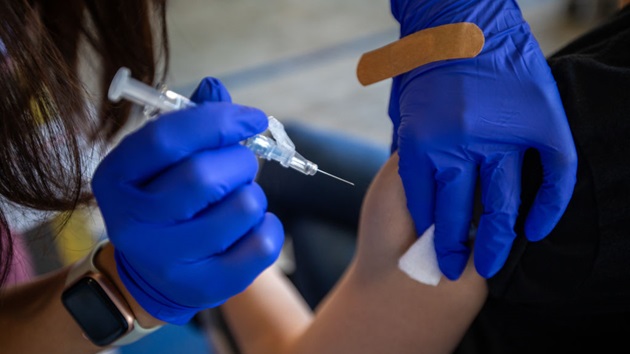(NEW YORK) — An estimated 36 million adults in the United States have received the updated COVID-19 vaccine as of Monday, according to new data from the federal government.
Additionally, about 3.5 million children have also gotten the updated shot, according to the survey, which is a sample size of the U.S. population, from the Centers for Disease Control and Prevention.
This is roughly equal to the number of Americans who had received the bivalent booster — which was targeted against different COVID variants — by this time last year.
While this means that uptake has not lagged compared to previous seasons, it also means just 13.9% of the adult population has gotten vaccinated.
This is lower than the nearly half of adults who said they planned to get the vaccine in a poll conducted by the KFF COVID-19 Vaccine Monitor in September.
Poll results showed that 23% of U.S. adults said they would “definitely” get the updated booster and 23% said they will “probably” get it.
The updated vaccine is targeted against variants that are currently circulating, which are related to XBB, an offshoot of the omicron variant.
There are formulations made by Pfizer-BioNTech and Moderna for those aged 6 months and older, and a formulation made by Novavax for those aged 12 and older.
The same CDC survey showed that 91 million U.S. adults, or 34.8% of the adult population, have received the flu vaccine and nearly 11 million over the age of 60, 13.5% of this age group, have received the RSV vaccine.
Meanwhile, 23 million children, or 4.9% of the pediatric population, have received the flu shot, data survey showed.
Public health experts usually advise that people receive respiratory virus vaccines by the end of October, but stress that it’s never too late to receive shots from pharmacies or doctors’ offices.
It comes as respiratory illness activity causing people to seek care remains low in most areas of the U.S., according to data updated this week by the CDC.
For the week ending Nov. 4, 2.9% of outpatient visits have been for respiratory illnesses. This is about half of where it was at the same time last year, but higher than the four preceding seasons, CDC data shows.
Last year’s respiratory virus season was unusually early, and activity increased sharply. Experts have said it’s possible that this year’s trending activity is a sign that we are getting back to the usual timing of ‘cold and flu’ season following disruptions after the emergence of COVID.
“Last year’s early spike was an anomaly, likely influenced by the pandemic’s impact on social behaviors and immunity,” said Dr. John Brownstein, an epidemiologist and chief innovation officer at Boston Children’s Hospital and an ABC News contributor.
“This year’s numbers, aligning more closely with pre-COVID patterns, indicate a reestablishment of typical ‘cold and flu’ season dynamics,” he continued. “However, we still have to see how the rest of the respiratory virus season plays out to know for sure.”
Copyright © 2023, ABC Audio. All rights reserved.












